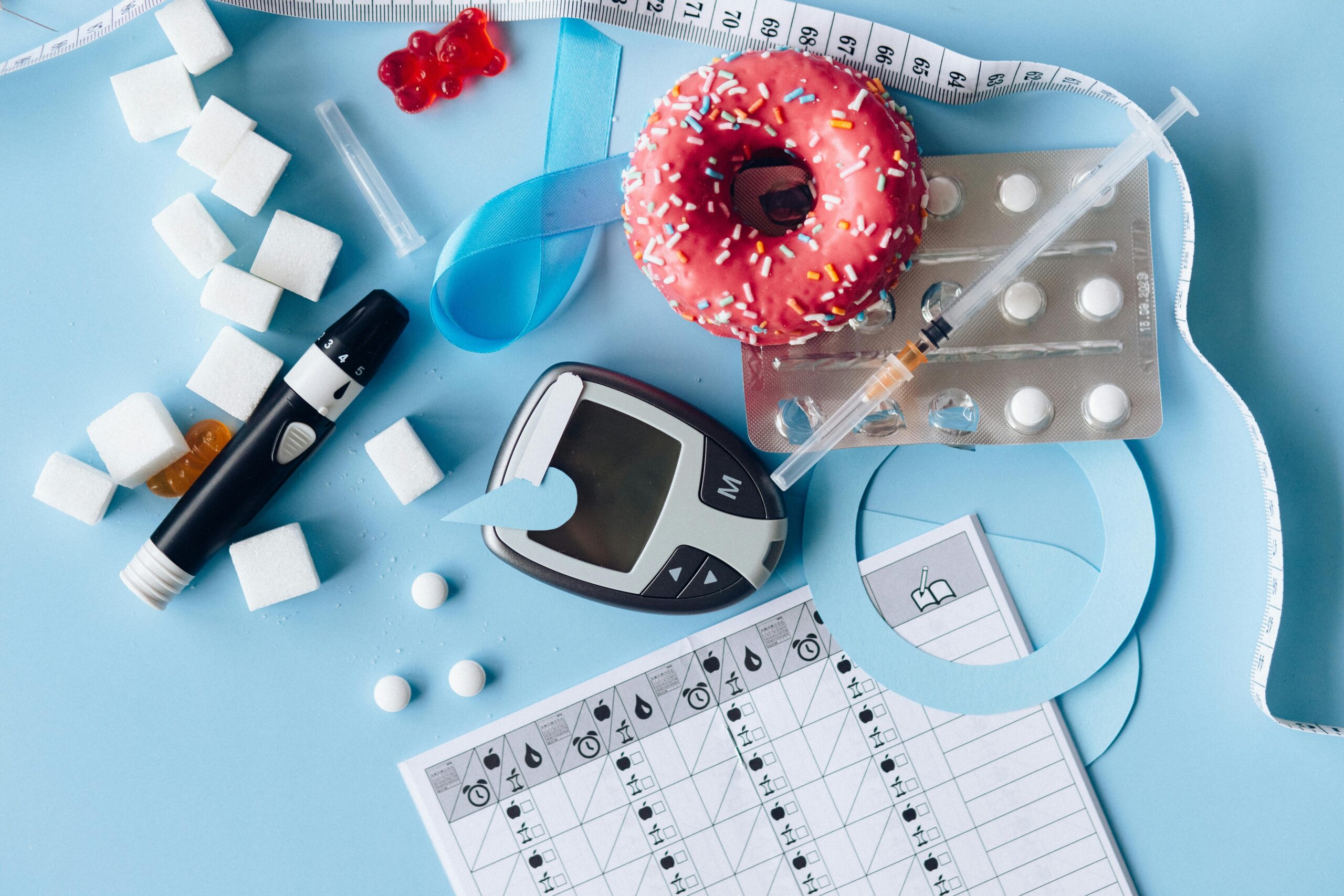Know your TDEE count already? Now let’s uncover how you can use it to lose fat. Your Total Daily Energy Expenditure (TDEE) tells you the calories your body burns each day.
But to lose weight, you need to eat fewer calories than that number, creating what’s called a calorie deficit.
The method of using TDEE for weight loss takes the guesswork out of dieting. You do not need to follow random meal plans or extreme restrictions. Instead, use your own data to build a calorie plan that actually works.
We are going to decode how to use your TDEE for weight loss. We will discuss how many calories you should cut. Also, how to track your progress using a reliable calorie tracker.
Let’s turn your TDEE into a practical fat-loss tool.

Table of Contents
What Does TDEE Mean for Weight Loss?
Your TDEE tells you how many calories your body burns in 24 hours. It includes every activity like breathing, digesting food, moving, and working out.
For weight loss, the goal is simple. You need to eat fewer calories than your TDEE. When you do that, your body starts using stored fat for energy. This is how fat loss happens.
If you eat exactly your TDEE, your weight stays the same. If you eat more than your TDEE, your body stores the extra energy as fat. That’s a calorie surplus.
In short:
- Eating below TDEE = weight loss
- Eating at TDEE = weight maintenance
- Eating above TDEE = weight gain
Knowing this helps you control your results instead of guessing. Once you find your TDEE, you can plan your meals and portions with accuracy.
How to Use Your TDEE to Lose Weight
You have calculated your TDEE. Now let’s turn that number into action.
The key is to eat fewer calories than your TDEE. This gap between what you eat and what you burn is called a calorie deficit.
When you stay in this deficit for a while, your body uses stored fat to fill the gap, and that’s how you lose weight.
Here’s a simple way to do it:
1. Find your TDEE.
You already have it by now. ANd if not, you can use a TDEE calculator to get the number.
Once you are done, let’s say your TDEE turned out to be 2,200 calories.
2. Create a small calorie deficit.
Subtract 300-500 calories from your TDEE.
Example: 2,200 – 500 = 1,700 calories per day.
This is your new daily calorie goal for steady fat loss.
This range is considered safe and sustainable by most health experts. A 500-calorie daily deficit equals roughly 3,500 calories per week, which leads to about 0.5-1 kg of fat loss per week. Indeed a healthy rate that helps you keep muscle and energy levels stable.
Going for a bigger deficit might make you lose weight faster at first, but it can slow your metabolism, cause fatigue, and increase the chance of regaining weight later.
3. Track your food.
Use a reliable calorie tracker app to record what you eat. It keeps you accountable and helps you stay within your goal.
4. Review your progress weekly.
If your weight drops by about 0.5-1 kg per week, you’re on the right track.
Example Table
You can use this template to keep track of your weekly progress:
| Week | TDEE (cal/day) | Target Calories (TDEE – Deficit) | Average Daily Intake | Weekly Weight Change | Notes / Adjustments |
| Week 1 | |||||
| Week 2 | |||||
| Week 3 | |||||
| Week 4 |
Tip:
Fill this table every Sunday. Review your progress and adjust your target calories only if your weight has stayed the same for more than two weeks.
Start small and stay consistent. A smaller calorie deficit is easier to stick with and helps you keep your energy high while burning fat effectively.
Safe Calorie Deficit and Weight Loss Rate
When it comes to losing fat, faster isn’t always better. Your body needs enough energy to function, recover, and stay healthy, even while in a deficit.
A safe calorie deficit means cutting enough calories to trigger fat loss. But should be done without slowing your metabolism or causing fatigue. The sweet spot is 300-500 calories below your TDEE.
This range keeps your body in a moderate calorie deficit, allowing you to lose around 0.5-1 kg (1-2 lbs) per week. That may not sound dramatic, but it’s exactly what long-term success looks like.
Why You Should Avoid Extreme Deficits
Many people try to speed up results by cutting 800-1000 calories a day. It works fast, but not for long. Here’s why it backfires:
- Your metabolism slows down to conserve energy.
- You lose muscle along with fat, which reduces your calorie burn.
- You experience fatigue, mood swings, and cravings, making the diet unsustainable.
Studies claim that gradual and consistent weight loss is more effective for long-term maintenance compared to crash diets.
Your goal should be steady progress, not overnight change. A controlled calorie deficit helps preserve muscle. It also keeps your hormones balanced, and makes fat loss sustainable.

Using a TDEE Calculator or Calorie Tracker for Weight Loss
Your TDEE isn’t a fixed number. It changes as your body changes. When you lose weight, your metabolism slightly slows down.
It is because a smaller body needs fewer calories to function. That’s why tracking and adjusting is key if you want to keep seeing results.
1. Track Your Progress Weekly
Start by weighing yourself at the same time each week. Ideally in the morning, after using the bathroom, and before breakfast.
Then, note your weight trend over a few weeks rather than reacting to daily changes. Remember that it can fluctuate due to water, sodium, or hormones.
- If your weight is dropping 0.5-1 kg per week: You’re in the right calorie range, keep going.
- If you’re losing more than 1 kg per week: Your deficit may be too aggressive. Increase calories by 100-200 kcal/day.
- If you’re not losing at all for 2+ weeks: You might need to reduce your calories by 100-200 kcal/day. Also add light activity like walking.
2. Recalculate Every 4-6 Weeks
Once you’ve lost about 5-10% of your body weight, your TDEE will likely drop. At that point, recalculate it using your new weight. Then adjust your calorie intake accordingly. This prevents your progress from stalling.
3. Use a Reliable Tracker
It helps you log food and see how close you are to your calorie target. These tools also give insights into your macronutrient balance.
It includes proteins, fats, and carbs. All these nutrients matter just as much as calories for body composition.
Pro Tip: Use a tracker that syncs with your fitness watch to get a more accurate view of your daily calorie burn.
Common Mistakes When Using TDEE for Weight Loss
Even when you know your TDEE, a few common errors can throw off your results. Let’s look at what to avoid so your fat-loss plan actually works.
1. Overestimating Your Activity Level
Many people pick “moderately active” or “very active” when they’re really closer to “lightly active.”
This mistake inflates your TDEE and makes you think you can eat more calories than you actually burn.
Fix:
Be honest about your daily routine. If you sit most of the day and only work out 3-4 times a week, “lightly active” is more accurate.
2. Not Tracking Food Accurately
A “spoon of peanut butter” or a “small handful of nuts” can easily turn into hundreds of untracked calories.
Small underestimations like these can cancel your deficit without you realizing it.
Fix:
Weigh or measure your food, especially high-calorie items like oils, nuts, and dressings.
3. Cutting Calories Too Aggressively
Slashing your calories too fast might make the scale move, but it often leads to muscle loss, fatigue, and rebound weight gain.
Fix:
Stick with a moderate calorie deficit (300-500 kcal below TDEE). It’s sustainable and safer long term.
4. Ignoring Protein Intake
Even with the right calorie goal, a low-protein diet can cause muscle loss instead of fat loss.
Fix:
Aim for 1.6-2.2 grams of protein per kilogram of body weight daily to maintain lean mass.
5. Expecting Linear Progress
Weight loss doesn’t always move in a straight line. Hormones, water retention, and digestion can cause temporary fluctuations.
Fix:
Track your weekly average weight, not daily changes. Progress over time matters more than a single number on the scale.

How to Combine TDEE With Exercise for Faster Results
Exercise changes your TDEE. The more you move, the more calories you burn. Combine smart eating with regular workouts.
This will speed up your fat loss. Cardio workouts like running, cycling, or swimming help you burn calories quickly.
Strength training, on the other hand, builds muscle and more muscle means a higher TDEE even at rest. That’s because muscle tissue burns more energy than fat.
A balanced plan includes both.
- Do strength training 3-4 times a week to build lean muscle.
- Add cardio sessions 2-3 times a week to increase calorie burn.
- Include rest days to let your body recover and prevent burnout.
This mix keeps your metabolism active and makes your TDEE work in your favor.
Pro Tip:
Use a calorie tracker app to log both your food and workouts. It helps you see how exercise changes your daily TDEE and keeps your calorie deficit on target.
Frequently Asked Questions (FAQs)
1. How do I calculate my TDEE to lose weight?
To find your TDEE, first calculate how many calories your body burns at rest (your BMR). Then multiply it by your activity level. Then, to lose weight, eat about 250-500 fewer calories than your TDEE each day for steady fat loss.
2. Can you lose weight by eating at TDEE?
No, eating the same number of calories as your TDEE will keep your weight the same. To lose weight, you need to eat less than your TDEE so your body burns stored fat for energy.
3. How many calories should I take off my TDEE to lose weight?
To lose weight, eat about 200-500 calories less than your TDEE each day. This small calorie cut helps you lose around 1 pound per week safely and steadily.
4. Is 1200 calories a day ok for losing weight?
A 1,200-calorie diet can help you lose weight, but it is very low and not safe for everyone. Eating so little for too long can make you tired and miss important nutrients. It is better to eat a bit less than your TDEE and talk to a doctor before starting.
5. What is the 3 3 3 rule for weight loss?
The 3×3 rule means doing three healthy things before noon. Walk 3,000 steps, drink one-third of your water for the day, and eat 30 grams of protein.
Conclusion
Using your TDEE for weight loss is about working smarter, not harder. Once you know how many calories your body burns, you can set a small, steady calorie deficit that actually fits your lifestyle.
Forget crash diets or extreme meal plans. Focus on consistency, eating a bit less than your TDEE, moving more, and tracking your progress weekly. That’s how you lose fat and keep it off for good.
Remember, your TDEE changes as your body changes, so check it every few weeks and adjust your intake. Stay patient, stay consistent, and let the numbers guide you.

